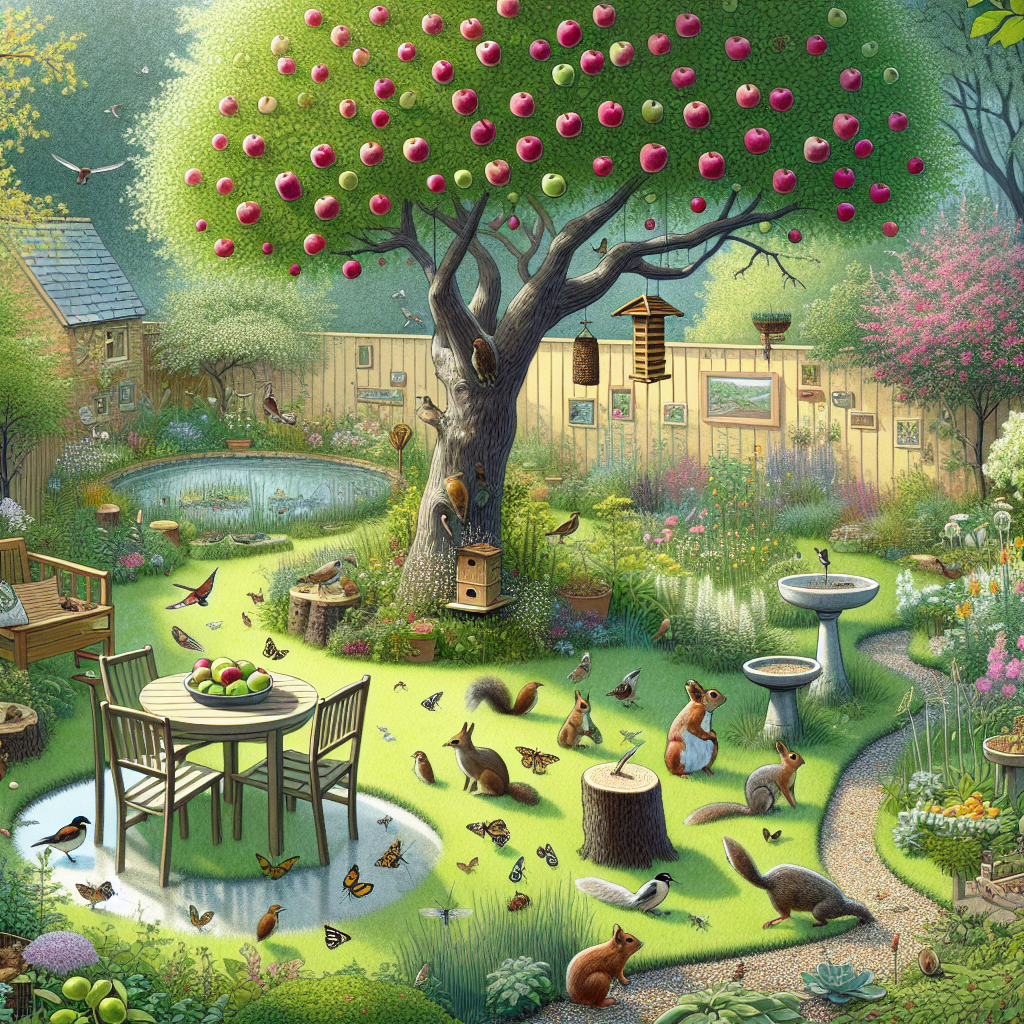Creating a Wildlife-Friendly Backyard
Welcome to the world of wildlife-friendly backyards! By transforming your outdoor space into a haven for birds, butterflies, and other creatures, you can not only enjoy the beauty of nature but also contribute to the conservation of local wildlife. In this comprehensive guide, we will walk you through the step-by-step process of creating a wildlife-friendly backyard that will attract and support a diverse range of species. So, let’s get started on this exciting DIY project!
Step 1: Assess Your Space
The first step in creating a wildlife-friendly backyard is to assess your space and understand its unique characteristics. Take a walk around your yard and observe the existing flora, fauna, and environmental conditions. This will help you determine the specific needs of your backyard wildlife and plan accordingly.
Here are some key factors to consider:
- Sunlight: Observe the amount of sunlight your yard receives throughout the day. This will help you choose the right plants for different areas.
- Soil Type: Determine the type of soil in your yard, as it will influence the types of plants that can thrive.
- Water Source: Identify any existing water sources, such as ponds or streams, or plan for the installation of bird baths or small water features.
- Existing Vegetation: Take note of the plants already present in your yard. Some may be beneficial for wildlife, while others may need to be removed or replaced.
Step 2: Plan Your Landscape
Now that you have assessed your space, it’s time to plan your wildlife-friendly landscape. This involves selecting the right plants, creating diverse habitats, and incorporating key features that will attract and support wildlife.
2.1 Select Native Plants
Native plants are the backbone of a wildlife-friendly backyard. They have evolved alongside local wildlife and provide essential food and shelter. Research the native plants in your region and choose a variety that will bloom at different times of the year, ensuring a continuous food source for wildlife.
Some popular native plants include:
- Milkweed: Attracts butterflies, especially monarchs.
- Sunflowers: Provide seeds for birds and attract pollinators.
- Coneflowers: Loved by bees and butterflies.
- Oak Trees: Support a wide range of wildlife, including birds and squirrels.
2.2 Create Diverse Habitats
Wildlife requires a variety of habitats to thrive. By incorporating different elements into your backyard, you can attract a greater diversity of species. Here are some ideas:
- Wildflower Meadow: Convert a portion of your lawn into a wildflower meadow, providing nectar and pollen for bees and butterflies.
- Hedgerows: Plant native shrubs and trees in a row to create a natural boundary that offers shelter and nesting sites for birds.
- Rock Piles and Logs: Create small rock piles or log piles to provide hiding places for insects, reptiles, and small mammals.
- Water Features: Install a bird bath, small pond, or water fountain to attract birds and provide a water source for other wildlife.
2.3 Provide Nesting Sites
Many birds and insects require specific nesting sites to raise their young. By incorporating nesting boxes, bee hotels, and other structures into your backyard, you can provide safe and secure spaces for wildlife to reproduce.
Here are some examples:
- Birdhouses: Install birdhouses of different sizes and shapes to attract a variety of bird species.
- Bee Hotels: Create bee hotels by drilling holes of various sizes into blocks of wood or bamboo.
- Butterfly Houses: Hang butterfly houses in sunny spots to provide shelter for these delicate creatures.
Step 3: Implement Your Plan
Now that you have a well-thought-out plan, it’s time to implement it and bring your wildlife-friendly backyard to life. This step involves preparing the soil, planting the right plants, and adding the finishing touches.
3.1 Prepare the Soil
Before planting, it’s important to prepare the soil to provide the best growing conditions for your plants. Here’s how:
- Remove any existing weeds or grass from the planting area.
- Loosen the soil using a garden fork or tiller to improve drainage and root penetration.
- Amend the soil with organic matter, such as compost or well-rotted manure, to enrich its fertility.
3.2 Plant Native Species
Now it’s time to bring in the native plants that will attract wildlife to your backyard. Follow these steps:
- Dig a hole that is slightly wider and deeper than the plant’s root ball.
- Gently remove the plant from its container and place it in the hole.
- Backfill the hole with soil, firming it gently around the roots.
- Water the plant thoroughly to settle the soil and remove any air pockets.
3.3 Add the Finishing Touches
To make your wildlife-friendly backyard even more inviting, consider adding some additional features:
- Bird Feeders: Hang bird feeders filled with seeds or nectar to attract a variety of bird species.
- Butterfly Puddling Station: Create a shallow dish filled with sand, water, and minerals to provide essential nutrients for butterflies.
- Rock or Log Piles: Arrange rocks or logs in a natural-looking way to create hiding places for wildlife.
Step 4: Maintain and Enjoy Your Wildlife-Friendly Backyard
Congratulations! You have successfully created a wildlife-friendly backyard. Now, it’s important to maintain it and continue providing a safe haven for wildlife.
4.1 Watering and Mulching
Water your plants regularly, especially during dry spells, to ensure their health and vitality. Apply a layer of






